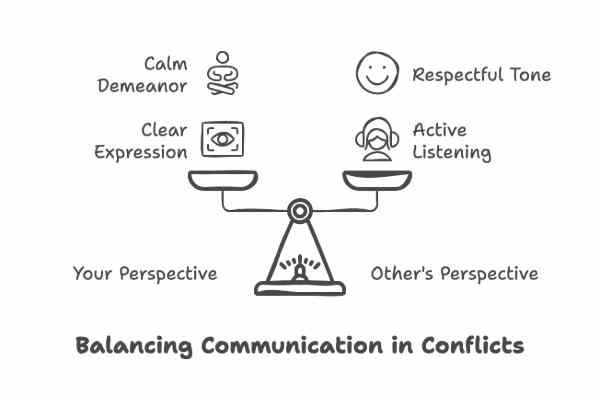Setting goals is one of the most powerful actions we can take to ensure personal growth, success, and fulfillment. Whether in personal life, career, or health, goals provide direction and a sense of purpose, helping us focus our energy on what truly matters. But many people struggle with goal setting. They know they want something, but turning that desire into a structured, actionable plan can feel overwhelming.
In this article, we will explore the art of goal setting, from understanding the importance of goals to implementing a strategy for achieving them. We’ll also break down effective goal-setting techniques and provide practical advice to help you stay motivated and track your progress.
The Importance of Goal Setting
Before diving into the specifics of goal setting, let’s understand why it’s so important. Goals are more than just targets we aim for—they shape the direction of our lives. Here’s why goal setting is crucial:
1. Clarity and Focus
Setting goals helps clarify what you truly want in life. It provides focus, directing your energy toward something specific. Without goals, it’s easy to get distracted and overwhelmed by life’s demands.
2. Motivation
Goals serve as a constant reminder of why you’re doing what you’re doing. They act as a source of motivation when things get tough, keeping you on track despite challenges.
3. Measurable Progress
Goals allow you to track progress. Without goals, it’s hard to know if you’re moving forward. With clear goals, you can assess where you stand and make necessary adjustments.
4. Sense of Achievement
There’s nothing more rewarding than achieving a goal. The sense of accomplishment boosts confidence and reinforces the belief that you can reach your dreams.
Types of Goals
Goals can vary significantly based on personal preferences, needs, and aspirations. Broadly speaking, goals can be categorized into three types:
1. Short-Term Goals
These are objectives you want to achieve within a relatively short time frame—weeks, months, or a year. Short-term goals help maintain focus and prevent procrastination.
2. Long-Term Goals
These are the overarching objectives that drive your vision and future. Long-term goals might take several years or even decades to achieve. They provide a sense of direction and help shape short-term goals.
3. Process-Oriented Goals
While outcome-based goals focus on the end result, process-oriented goals are about the journey and the steps needed to achieve the result. These goals focus on developing habits and improving skills.
Effective Goal Setting Techniques
Now that we understand the importance of goal setting and the different types of goals, let’s dive into effective techniques that will help you set goals that are achievable, motivating, and rewarding.
1. SMART Goals: A Proven Framework
One of the most popular and effective methods for setting goals is the SMART criteria. SMART goals are Specific, Measurable, Achievable, Relevant, and Time-bound. Let’s break down what each element means:
- Specific: A goal should be clear and specific. Instead of saying “I want to get fit,” say “I want to run a 5k in three months.”
- Measurable: Your goal should be measurable so that you can track progress. For example, “Lose 10 pounds” is measurable.
- Achievable: While goals should be challenging, they must also be realistic. Setting an impossible goal can lead to frustration and demotivation.
- Relevant: Your goals should be aligned with your broader life values and aspirations. Make sure they are meaningful and worthwhile.
- Time-bound: Set a deadline for achieving your goal. This adds a sense of urgency and helps you stay focused.
By following the SMART framework, you can create clear and achievable goals that guide your actions.
2. Break Goals Down into Actionable Steps
Big goals can often feel overwhelming, but breaking them down into smaller, manageable tasks makes them more achievable. For instance, if your goal is to write a book, the big picture might seem daunting. But if you break it down into smaller tasks—such as outlining chapters, writing 500 words a day, and editing for 30 minutes—you’ll find the process much more manageable.
By creating smaller steps, you’ll have clear daily or weekly targets to work toward, which keeps you motivated and makes your progress measurable.
3. Write Down Your Goals
Research has shown that writing down your goals significantly increases the likelihood of achieving them. When you write your goals, you solidify your commitment and create a reminder to stay focused. This also makes it easier to break your goals into actionable steps.
Consider writing your goals in a journal, on a vision board, or in a digital note that you can review regularly. Be sure to revisit your goals periodically to track your progress and make any necessary adjustments.
4. Use Visuals for Motivation
Many successful individuals use visual reminders to stay motivated and focused. This can be as simple as creating a vision board or using charts and graphs to track progress. For example, if you’re working toward a fitness goal, you could use a calendar to mark off each day you work out. Seeing your progress helps reinforce the habit.
5. Set Milestones and Celebrate Small Wins
Achieving your ultimate goal is incredibly rewarding, but the road to success can be long. Setting smaller milestones along the way gives you opportunities to celebrate your achievements and stay motivated. For example, if your long-term goal is to write a book, a milestone could be completing the first chapter or writing 10,000 words.
Celebrating these small victories creates positive reinforcement and helps maintain momentum, which keeps you on track toward your larger goal.
Also check: How to Use Gratitude Journaling to Transform Your Mindset
Overcoming Common Goal-Setting Challenges
While goal setting is powerful, it’s not without its challenges. Below are some common obstacles you might face and strategies to overcome them:
1. Procrastination
Procrastination is one of the most common barriers to achieving goals. It can happen when a goal feels too big or overwhelming. Combat procrastination by breaking your goal into smaller, more manageable tasks. Start with something small—like dedicating just 10 minutes to a task—and build from there.
2. Lack of Motivation
Staying motivated can be tough, especially when the initial excitement of a goal wears off. To keep your motivation high, regularly revisit your “why” behind the goal. Reflect on why the goal is important and what it will bring to your life. Additionally, keep your environment supportive by surrounding yourself with people who encourage your progress.
3. Perfectionism
It’s easy to get stuck in the trap of wanting everything to be perfect, but this can halt progress. Remember, perfection isn’t necessary for success. Focus on making progress, even if it’s imperfect. Take action, learn from mistakes, and adjust along the way.
4. Lack of Resources
Sometimes, you may feel like you lack the resources to achieve your goals. Whether it’s time, money, or knowledge, start by taking inventory of what you do have. Consider how you can work with what you have and look for ways to be resourceful. Additionally, seek out free resources or low-cost alternatives if necessary.
Maintaining Consistency and Accountability
Achieving your goals requires consistency and accountability. Here are some tips for maintaining both:
1. Establish a Routine
Create a daily or weekly routine that incorporates actions aligned with your goals. The more consistently you work on your goals, the easier it becomes to make progress. Build habits that support your objectives, and they’ll become second nature.
2. Accountability Partners
Having someone to hold you accountable can make a big difference. This could be a friend, mentor, or colleague. Sharing your goals with someone else increases the pressure to stay committed, and having an accountability partner can provide support and motivation.
3. Track Your Progress
Whether through journaling, using an app, or checking off a list, tracking your progress keeps you on track. By visually monitoring your progress, you’ll be able to see how far you’ve come and adjust your approach if necessary.
Adapting Goals as You Grow
Life is dynamic, and so are your goals. As you grow and evolve, your goals should evolve too. It’s important to periodically reassess your goals to ensure they still align with your values, needs, and circumstances. If you find that a goal no longer serves you or seems out of reach, don’t be afraid to modify it or set a new one.
Conclusion
The art of goal setting is about turning your dreams into clear, actionable plans. By understanding the importance of goals and employing effective techniques like the SMART framework, breaking goals into manageable steps, and staying accountable, you can turn your aspirations into reality.
Remember, goal setting isn’t just about the destination—it’s about the journey. Embrace the process, celebrate small wins, and keep moving forward. With focus, commitment, and the right strategies, you can achieve anything you set your mind to.






